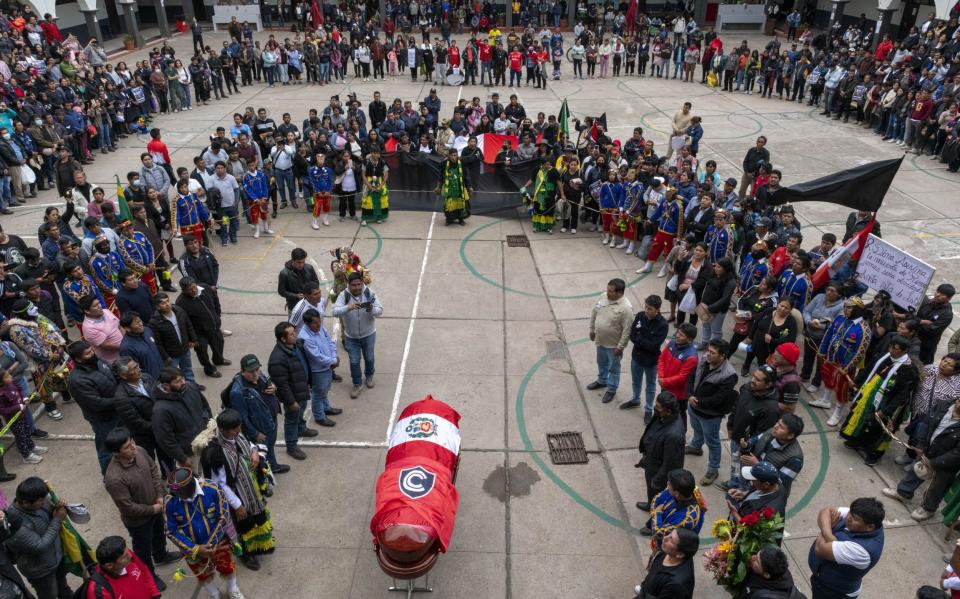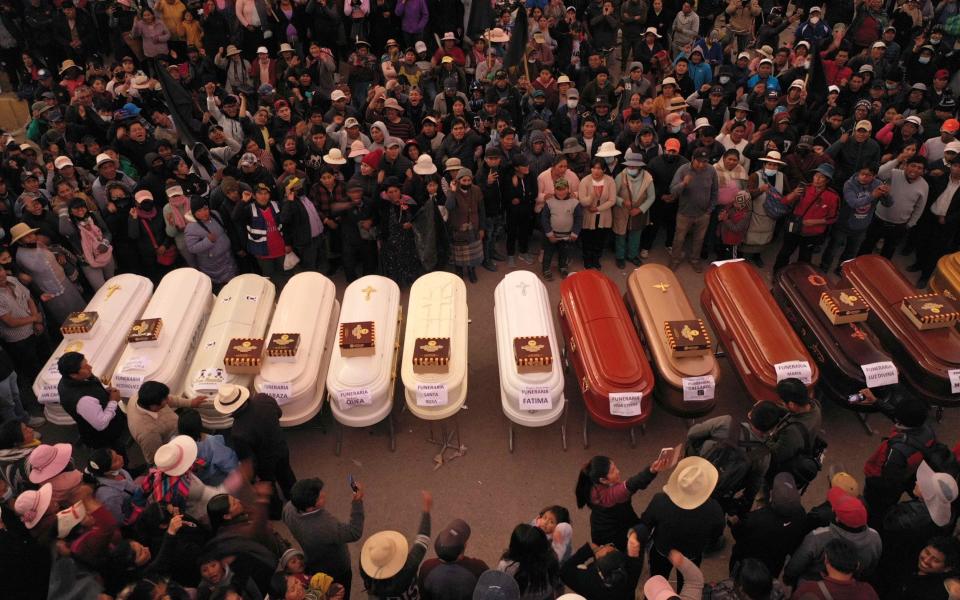Indigenous leader shot dead as Peru protests pit rebel campesinos against ruling elite

As they descended on Cusco, the former capital of the Inca empire turned global tourism magnet, Remo Candia insisted to his followers that their anti-government protests remain peaceful.
By all accounts, the Quechua-speaking villagers heeded his pleas as they entered the picturesque Andean city. Yet it made little difference. Candia, 42, a cheerful, energetic community leader was shot from distance by security forces as the demonstrators gathered in a town square.
He died in hospital six hours later, making him one of more than 60 people killed in the turmoil rocking Peru since the sudden impeachment and arrest of Leftist populist president Pedro Castillo after his botched coup on Dec` 7.
“We want justice for the death of my brother,” Candia’s sister Lisbeth, 45, told The Telegraph. “He has left three orphans behind, two of them children. How is it that in our country, the rights of all Peruvians are being violated? We’re practically living in a dictatorship.”


More than 50 of the dead were shot by the police and military during the sometimes violent protests, some while storming regional airports. But they also include peaceful protesters, bystanders and a doctor treating a wounded demonstrator. The rest were patients in ambulances stranded by road blockades, plus a police officer found in a burnt-out patrol car.
Human rights groups are accusing the government of using “excessive” force and the United Nations is demanding an investigation into the deaths, which have only poured fuel onto the fire of public fury at a political establishment widely viewed as profoundly corrupt.
The demonstrations, which began in impoverished mountain areas have now spilt into the capital, Lima, where police have been dispersing protesters with tear gas. Meanwhile, road blockades across the country have triggered shortages of food, medicine and petrol.
Mobs have also stoned the vehicles of a congresswoman and a minister and burned down another lawmaker’s home. On Friday, the governor of the jungle region of Madre de Dios responded with gunfire after a gang surrounded his home.
Mr Castillo, 53, had attempted to shutter congress and rule by decree after being cornered by anti-corruption prosecutors. The move was a flagrant violation of the constitution and congress immediately impeached him.
But the ousting of the political outsider by a congress with an ultra-conservative majority and 90 per cent disapproval rate has outraged many Peruvians, especially the rural poor, who had closely identified with Castillo - who is, like Candia, a campesino, meaning someone of indigenous ancestry who works the land.

They are demanding new elections and the resignation of Dina Boluarte, the president, who had previously served as Castillo’s vice-president and is now seen by many as having blood on her hands.
She has repeatedly defended the crackdown, describing the police response as “immaculate”. She has also claimed, in spite of autopsies finding police munitions in the bodies, that “unofficial” sources had revealed that the dead had been killed by other protesters using “dumdum” bullets smuggled from Bolivia.
The turmoil has been disastrous for Peru’s economy, especially its tourism industry - with Machu Picchu, which normally draws more than a million visitors a year, indefinitely closed. The neighbouring Sacred Valley of the Incas is one of the areas up in arms, with protesters even destroying stretches of the railway to the stunning Inca citadel.
Joaquin Randall, who manages his family’s lodge, El Albergue, in the picturesque village of Ollantaytambo, from where trains depart to Machu Picchu, said he currently had no guests at the hotel and has had to furlough nearly 100 employees.


“People have been cancelling their 2023 bookings or asking to push them back to 2024,” he said. “This is affecting the entire tourism sector but especially those at the lower end, including all our local suppliers. It’s really unacceptable that visitors to Peru, coming here for a once-in-a-lifetime experience, have had their trips ruined.”
José Alejandro Godoy, a political scientist at the Pontifical Catholic University of Peru, said that the protests would only grow until new elections are held. But he warned that without deep political reforms, including allowing new parties to register, the next congress and president could also prove as problematic as the current incumbents.
“The government has proven itself incapable of understanding the situation. The country needs to move past this crisis as soon as possible. It’s possible that we get a better congress and government, but new elections will also be a game of chance.”

 Yahoo News
Yahoo News 